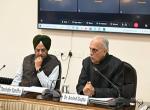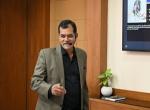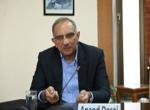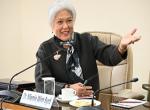The South Asian Association for Regional Cooperation (SAARC) was established in 1985 with the prime objective of accelerating economic and social development among member states through joint actions in mutually agreed areas of cooperation. Thirty years on, while regional integration in South Asia still remains a pipe dream, the Vivekananda International Foundation, inspired by Prime Minister Narendra Modi’s ‘Neighbourhood First’ policy, held a day long conference ‘South Asia Regional Cooperation: Taking Stock and the Way Forward” on Aug 5th 2015, aimed at examining the broader dimensions of regional integration against the backdrop of SAARC’s hitherto rather dismal performance. Participants to the conference, some of India’s best known practitioners of diplomacy, Prof Muckund Dubey, Amb Kanwal Sibal, Amb Leela Ponappa, and Amb Satish Chandra, among others, including Bangladesh’s former Ambassador to India, Mr. Tariq Karim, who conceived the idea behind this conference, and representative from the Confederation of Indian Industry (CII), mulled extensively over three grueling sessions a broad range of regional issues - the continued relevance of SAARC, sub-regional options, developmental imperatives - network of roads, railways, power grids, fiber optics etc., joint management of transnational rivers, development-security nexus, among others.
 An assessment of the current situation of SAARC was carried out in the first session. Amb Rajiv Sikri and Amb Jayant Prasad identified areas of success, areas of little or no progress, and analysed causes of its failure. Noted diplomat and India’s former Foreign Secretary Prof. Muchkund Dubey moderated the discussions. It was highlighted that SAARC, plagued by insufficient funding, weak Secretariat and internal political rivalry among member states, needs to be rejuvenated in keeping with the changing economic and security paradigm in the region.
An assessment of the current situation of SAARC was carried out in the first session. Amb Rajiv Sikri and Amb Jayant Prasad identified areas of success, areas of little or no progress, and analysed causes of its failure. Noted diplomat and India’s former Foreign Secretary Prof. Muchkund Dubey moderated the discussions. It was highlighted that SAARC, plagued by insufficient funding, weak Secretariat and internal political rivalry among member states, needs to be rejuvenated in keeping with the changing economic and security paradigm in the region.
With Amb Veena Sikri, Mr. H K Rajora and Dr R Mandal on board in the second session, issues related to trade, connectivity and infrastructure were comprehensively discussed. Deliberations across the session amply illustrated that while South Asia sits on huge development potentials, countries in the region, hamstrung by lack of connectivity arising mainly from Pakistan’s obstructionist attitudes, need to find alternatives routes to development. The session, chaired by former Foreign Secretary Amb Kanwal Sibal discussed a range of infrastructure projects which could be undertaken bypassing SAARC.
With incremental rise in asymmetric threats to national security across the globe, linkages between security and development are nowhere as pronounced as in South Asia. The third session, chaired by Amb Tariq Karim, dealt exclusively with development-security nexus. The four panelists, namely, Amb Pinak Ranjan Chakravarty, Amb.Leela Ponappa, Mr. Hiranmay Karlekar, and Mr. Shantanu Mukharji, dwelt widely on the security challenges in South Asia. Deliberations around the table brought home the hard reality that South Asia, already under an intense wave of
 radicalization and facing new threats on the horizon, has no institutional mechanism to handle security risks. A refurbished SAARC, equipped adequately with a system for collection and sharing of intelligence, including an Indian presence in the Secretariat, would be a better option.
radicalization and facing new threats on the horizon, has no institutional mechanism to handle security risks. A refurbished SAARC, equipped adequately with a system for collection and sharing of intelligence, including an Indian presence in the Secretariat, would be a better option.
While the conference concluded with a number of doable points, a major takeaway from the table was the focus on sub-regional options. There was broad consensus around the table that Bangladesh, Bhutan, India and Nepal (BBIN), signing a path breaking Motor Vehicles Agreement allowing seamless movement of people and cargo across four nations, have set a model which can be emulated for undertaking other similar infrastructure projects. What is however important is that sub-regional arrangements such as BBIN need an institutional make over to sustain. Even more importantly, mega projects which can withstand internal political vicissitudes need to be undertaken. The smaller nations are looking up to India for taking a lead in South Asia’s regional integration.








